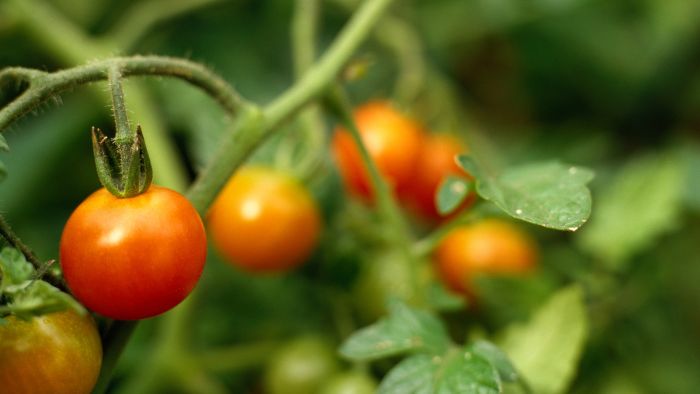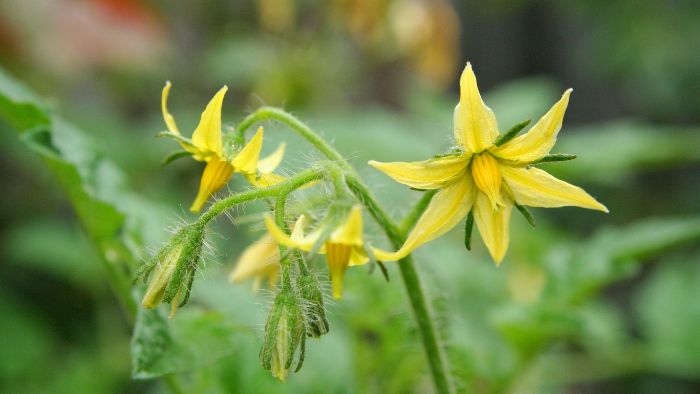Last Updated on November 13, 2022 by Guillermina
Why are my tomato plants not flowering in my aquaponics system, even though I am doing everything right and my plants look healthy? Are you faced with this dilemma or have in the past and did not know how to deal with it? After reading this article, that will be a thing of the past because we will discuss all you need to know about it.
Tomatoes In Aquaponics
Tomatoes are one of the most popular aquaponics plants. This is because they are very easy to grow in the systems, have low nutrient requirements and short growth cycles with some varieties procuring fruit in as quickly as 60 days.
In aquaponics, tomatoes are grown in a system that integrates fish. Nutrient rich water from the fish tank is transported to the bed of tomatoes, they then use the nutrients to grow while cleaning the water in the process.
The fish water is ideal for tomatoes in an aquaponics system because they provide the right amount of nutrients to support their growth and productivity.
While tomatoes grow well in aquaponics, and may actually grow faster than their soil grown counterparts there are some instances where you might find yourself asking questions such as “Why are my tomato plants not flowering”? Let us get into possible answers to this question.
Why Your Tomato Plants Are Not Flowering
There are several reasons why your tomatoes may not be flowering in your aquaponics system, even though they look healthy and happy.
Your tomatoes should start to flower between 4-6 weeks, more of these flowers should continue to come up and eventually turn to small green tomatoes. If this does not happen, the cause is usually an environmental issue.

1. Insufficient light
The first reason could be insufficient light. Tomatoes need a lot of light to give them that boost of energy they need to flower. Increase the number of hours that you provide your tomatoes with and see if the flowers start to come through. If you need artificial light to extend the hours you can use lights such as this one, which you can purchase on amazon.
2. Constant temperature
Growing tomatoes at a constant temperature can inhibit or delay blooming. They require daytime temperatures of 70-76 degrees F and 65-72 degrees F at night. Provide them with these correct temperatures and they will start to blood.
3. Not enough pruning
If you have not been pruning your tomatoes for a while, it may be time to prune them. Pruning allows light to penetrate through the plant so that the entire plant so it can photosynthesize efficiently. This will therefore help your plant bloom.
4. Nutrient imbalance
Sometimes in aquaponics, nutrients can go off balance or accumulate to levels that are not good for the plant, and this will affect their growth and productivity. To solve this problem, a simple water change may work. Change 1/3 of the total volume of your system and replace it with clean water. This should help to restore the nutrient balance.

5. Potassium deficiency
Tomatoes love a lot of potassium in their environment. If the concentration of potassium is low, they may not bloom. Adding a tablespoon of soluble sulfate of potash once a week may help your tomatoes start to bloom.
6. Hormone
If all the right environmental conditions are maintained and your tomatoes are still not blooming, give them a hormone that encourages blooming in tomatoes. Most of these are available from garden centers and nurseries, just ask your local gardening expert for the best recommendation.
7. Variety of tomato
There are different types of tomatoes and they flower differently. There are determinate varieties that flower only once in the season, and the indeterminate which will flower continuously throughout the season. So if your tomatoes have flowered once before and are no longer flowering, it could be because they are the variety that flowers only once. The next time you purchase seeds or seedlings for your aquaponics system, get the indeterminate varieties.
You can learn more about tomato varieties at: https://bonnieplants.com/blogs/garden-fundamentals/learn-tomato-growing-terms
How To Increase Flowering In Tomatoes
You can increase your tomatoes flowering by continuing to maintain the right environmental conditions. Because tomatoes are potassium heavy feeders, increasing the concentration of potassium in your system will help increase flowering.
Be careful, however, with the amount of potassium you add to the system. Find out what the tolerance limit of the fish in your system is so that you do not stress them in the process.
When Do Tomato Plants Flower?
Tomatoes in aquaponics grow faster than those grown in the soil, which means they will also flower sooner. If you do not see small flowers between 4-6 weeks from planting, something may be wrong in your system and you should investigate to see what could be wrong. And then remedy it to get your tomatoes going.
How To Get Tomato Plants To Flower
Generally, as long as the right environmental conditions are maintained, your tomato plants should naturally flower. If they do not do so when expected, you can help them by giving them a hormone that stimulates flower production. These hormones are easily obtainable from most garden centers.
Conclusion – Tomato Plants Look Healthy But Without Flowers
We hope this article has put your mind to rest by helping you answer the question of why are my tomato plants not flowering in my aquaponics system.
As healthy as your plants may look, there may be at least one environmental condition that may be off, leading to this undesirable consequence. The information provided in this article will help you to correctly diagnose the cause, and the steps you need to take to solve the cause.
Remember, it is usually environmental issues that inhibit your tomato plants from flowering. But the variety of tomatoes that you have may only flower once. If this is the case, nothing you do will make them flower. So familiarize yourself with the tomato variety you have
If you enjoyed reading this article and found it useful, please share it with your family and friends.
Happy gardening.

An aquaculture specialist and freelance writer. Passionate about anything sustainable living, such as growing your own food, and if you can do it in conjunction with fish farming, even better! I currently work as an aquaculture researcher where I can expand and share my knowledge and skills on aquaculture, crop farming and adding value to wastewater by using it to grow food products. I enjoy reading and learning as much as possible, and writing is another avenue for me to share the knowledge I gain with others. I want my writing to inspire people to try their hand at gardening, whether indoors or outdoors. You can even start by keeping a few houseplants indoors to help you gain a bit of confidence if you need to.


